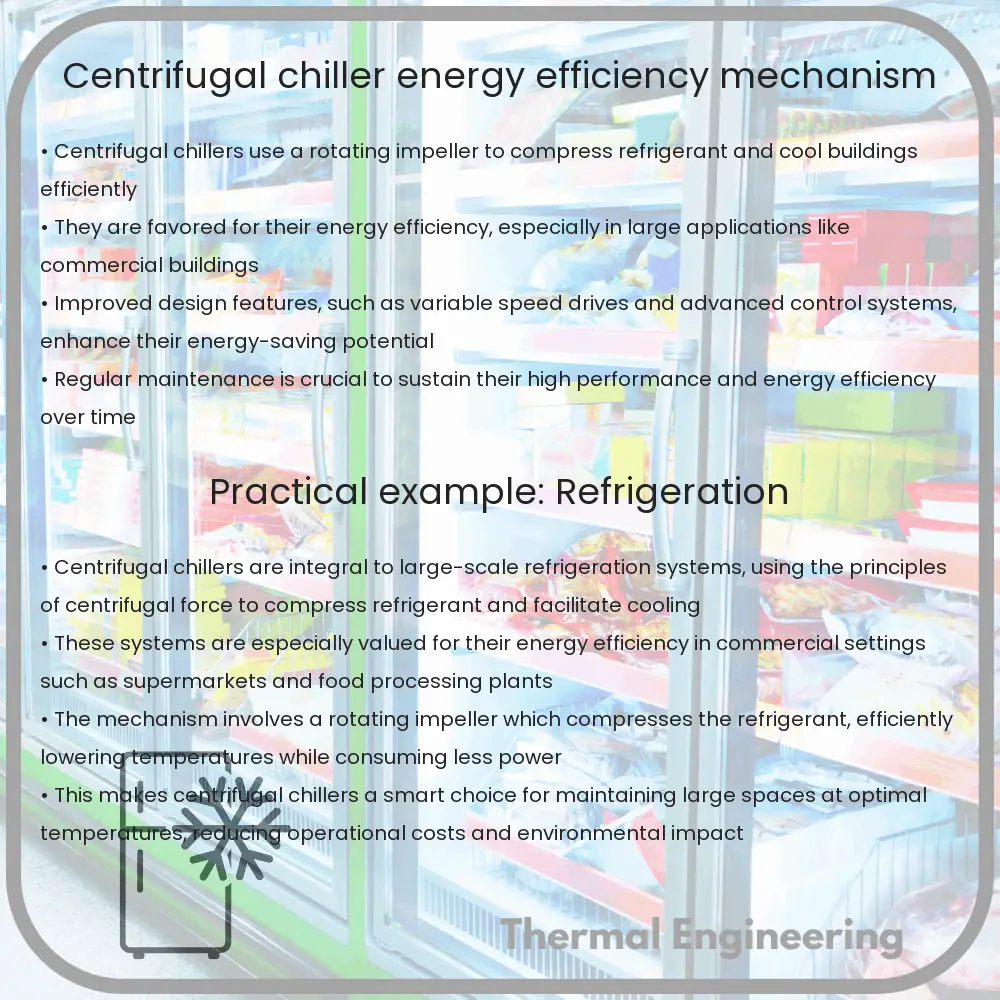Learn about centrifugal chillers, their working mechanism, energy efficiency factors, and the latest advancements enhancing their performance.

Understanding Centrifugal Chillers: Mechanism and Energy Efficiency
Centrifugal chillers are a fundamental component in large-scale air conditioning systems, utilized in commercial buildings, industrial facilities, and large institutions. These systems are designed to provide efficient and reliable cooling by employing the principles of vapor-compression refrigeration. Understanding the mechanism of operation and the aspects that influence the energy efficiency of centrifugal chillers can help in optimizing their performance and reducing operational costs.
How Does a Centrifugal Chiller Work?
The core operation of a centrifugal chiller revolves around the vapor-compression cycle, which consists of four main components: the evaporator, the compressor, the condenser, and the expansion valve.
- Evaporator: The refrigerant absorbs heat from the chilled water and begins to boil, turning from a liquid into a vapor.
- Compressor: This component, specifically a centrifugal impeller in this case, draws the refrigerant vapor from the evaporator. The impeller increases the pressure and temperature of the refrigerant by spinning it at high speed using centrifugal force.
- Condenser: The high-pressure vapor is then cooled in the condenser where it rejects the absorbed heat to the cooling water or air outside the system.
- Expansion Valve: The high-pressure liquid refrigerant passes through an expansion valve where it undergoes a pressure drop, cooling it down before it returns to the evaporator, completing the cycle.
Factors Affecting Energy Efficiency
The efficiency of centrifugal chillers is influenced by several factors, both mechanical and environmental. Here are some key aspects:
- Compressor Design: The efficiency of the compressor, particularly how well it can compress the refrigerant without losing energy to friction and heat, is crucial.
- Refrigerant Type: Different refrigerants have varying thermodynamic properties that can affect both the efficiency and environmental impact of the chiller.
- Load Management: Chillers operate most efficiently at full load. Variable frequency drives (VFDs) can adjust the speed of the compressor, improving efficiency in part-load conditions.
- Temperature of Condensing Water: Lower condensing water temperatures generally improve the efficiency of the chiller by reducing the work the compressor has to do.
Technological Advances in Centrifugal Chillers
Recent advancements in centrifugal chiller technology have focused on improving energy efficiency and reducing environmental impact. Examples include:
- Magnetic Bearing Compressors: These compressors eliminate the need for oil lubrication, reducing maintenance costs and increasing efficiency by decreasing friction losses.
- Variable-speed Drives: By adjusting the motor speed based on cooling demand, these drives can significantly reduce energy consumption.
- Eco-friendly Refrigerants: New refrigerants with lower global warming potentials (GWPs) are being developed to replace older, more harmful chemicals.
Implementing these technologies can significantly improve the performance of centrifugal chillers, offering both economic and environmental benefits.
Conclusion
Centrifugal chillers are critical to the operation of many large-scale cooling systems. By understanding the mechanisms of these chillers, and the factors that affect their efficiency, operators can better manage their performance. Furthermore, embracing technological advancements can help in achieving higher efficiency and sustainability in cooling solutions. Such strategies are not only beneficial in reducing operational costs but also in contributing to global environmental conservation efforts.